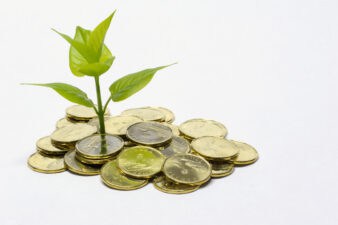It seems like all we hear about is weakness in commodities. Both crude oil and natural gas are flirting with lows not seen in years. Copper, iron ore, and coal prices are depressed, thanks to perceived weakness out of China. Even food commodities like wheat, corn, and beef are off considerably from highs set late last year or earlier this year.
For Potash Corp./Saskatchewan Inc. (TSX:POT)(NYSE:POT), a decline in food prices is bad news, but that’s not the whole story. The company is also dealing with other factors, including Russian producers who are poised to flood the market with extra supply, and a tough growing season for many North American farmers.
These fears have sent the stock reeling. Back in February, shares traded hands for more than $45 each on the TSX. Since then they’ve fallen nearly 50% to settle at today’s level of $26.50. The decline has also caused investors to question the company’s 7.6% dividend.
Let’s take a closer look at the company to see if investors can count on the payout.
The numbers
At first glance, Potash Corp. looks to have a sustainable dividend.
Over the first six months of 2015, the company earned US$1.22 billion in cash from operating activities, while paying out US$522 million in capital expenditures. That gives it a free cash flow of $683 million, which is enough to sustain the US$586 million in dividends it paid during the period.
This would be all fine and good, if it wasn’t for the outlook for potash prices. Previously, the price of the mineral was held up by two cartels, one in North America and one in Eastern Europe. The European cartel has all but collapsed on increased production coming from Russian suppliers. New supply coming onto the North American market has investors worried the same thing is about to happen here.
According to company projections, the dividend is safe if the price of potash stays above $250 per tonne. In the second quarter, the average realized price was $273, which does give it a bit of wiggle room.
If the price declines to $225 per tonne, there’s likely a problem. Assuming the same volume as the first half of the year, that would decrease cash from operations from US$1.22 billion to a number more like US$1 billion. Subtract US$522 million in capital expenditures, and the company would have a free cash flow of US$478 million and a dividend of US$586 million.
Over the short term, a difference of about $200 million annually between free cash flow and dividends isn’t the end of the world. But over the long term, it’s certainly not sustainable.
Additionally, there’s the risk of the developing world. Much of the growth in potash demand has come from places like China and Brazil, two economies that are experiencing some pretty major weaknesses. If you think potash shipments aren’t affected by the economy, think again. In 2009, shipments fell more than 40% as farmers just couldn’t afford the money for fertilizer.
What about K+S?
There’s one more factor that could be interesting for Potash Corp., and that is the company’s takeover offer for German producer K+S.
K+S is in the middle of constructing a huge new mine in Saskatchewan, the Legacy project. This mine could add two million tonnes of new potash production to the North American market. Since K+S isn’t a member of the cartel, this new mine would likely push prices down further.
From this perspective, it makes sense for Potash Corp. to be interested. Analysts also figure it would be cheaper for the company to export supply from Canada to European customers, while shutting down higher cost production in Europe. Obviously, European politicians aren’t in favour of that, which immediately puts the deal in danger.
This isn’t a friendly deal either. K+S management are opposed to the deal, and many of the company’s major shareholders are as well. Thus, the future of potash prices in North America is in doubt.
The short-term future doesn’t look good for Potash Corp. At this point, the company can afford the dividend, but if the price of the commodity falls, a dividend cut could be on the table. For that reason, I think dividend investors should avoid Potash Corp.
 Claim Membership Credit
Claim Membership Credit






